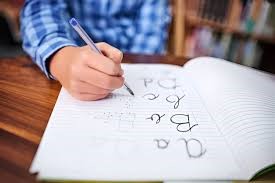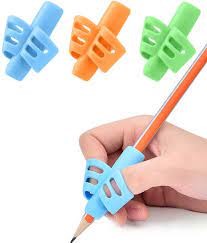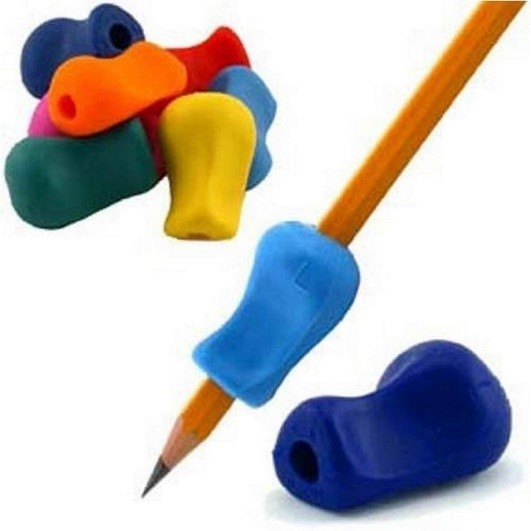
Handwriting: A Core Skill for Communication and Self-Expression
Handwriting is a fundamental skill deeply embedded in our ability to communicate and express ourselves. It involves a complex interplay of fine motor skills, visual perception, and cognitive abilities, each contributing to the art of writing. Various factors can impact an individual’s handwriting journey, including physical limitations, neurological conditions, and environmental circumstances.
The Role of Fine Motor Skills
At the heart of proficient handwriting lies the development of fine motor skills. These skills involve the intricate coordination of small muscles in the fingers and hands, enabling individuals to execute the precise and delicate movements needed for writing. When these motor skills are underdeveloped or compromised, individuals may struggle to achieve neat, fluid handwriting, often resulting in frustration and disengagement from the task.
Neurological Influences
Neurological conditions can profoundly shape the handwriting experience. Dysgraphia, for instance, is a specific learning disability that impairs the brain’s ability to coordinate movements during writing tasks. Individuals affected by this condition may find it challenging to organize their thoughts on paper, leading to messy or incomplete writing that does not accurately reflect their knowledge or skills.
Environmental Factors
The environment plays a pivotal role in shaping handwriting proficiency. Consider the impact of ergonomics: a comfortable seating position can significantly influence one’s ability to write effectively. Similarly, the choice of writing tools—whether a traditional pencil, a specialized pen, or digital devices— affects the fluidity and control of writing. Adequate lighting conditions and a supportive learning environment further enhance the quality of handwriting. In today’s technology-driven world, while digital communication tools are prevalent, the importance of cultivating legible handwriting for academic success and daily interactions cannot be overstated.

The Role of Occupational Therapists in Addressing Handwriting Challenges
Occupational therapists (OTs) serve as invaluable allies in the quest to improve handwriting skills. These professionals are equipped with a wealth of knowledge and strategies to address handwriting challenges that affect various aspects of life, including academic performance, effective communication, and overall self-esteem.
A primary focus of occupational therapy in this domain is to foster both legibility and fluency in handwriting. Occupational therapists (OTs) begin by meticulously evaluating an individual’s fine motor skills, visual perception, and hand-eye coordination to pinpoint specific areas of difficulty. This comprehensive assessment informs the development of personalized intervention plans tailored to meet the unique needs of each individual.

Interventions and Activities
The interventions crafted by occupational therapists may include an array of engaging activities designed to strengthen hand muscles and enhance dexterity. Examples of these activities might include:
Finger Strengthening Exercises:
Activities that focus on building strength in individual fingers, promoting better control and grip.
Grasp Strengthening Activities:
Using various tools, such as putty or small objects, these activities help develop the muscle coordination required for writing.
Tracing and Forming Shapes:
Engaging in specific hand movements, such as tracing letters or connecting dots, reinforces proper letter formation.


Beyond physical exercises, occupational therapists also emphasize the importance of visual perception skills that are essential for successful handwriting. They may introduce activities that nurture visual tracking abilities, enhance letter formation recognition, and promote spatial awareness and letter spacing.
To facilitate practical intervention sessions, occupational therapists (OTs) utilize a variety of therapeutic tools and techniques. These may include:
Adaptive Writing Utensils:
Tools specifically designed to enhance grip and control for individuals who struggle with traditional writing implements.
Writing Aids:
Items such as slant boards or weighted pencils that help stabilize the writing hand and enhance proper positioning.
Together, these tools empower individuals to achieve greater control over their writing strokes, allowing for more precise and confident handwriting.
Engaging Learning Processes
A critical aspect of occupational therapy for handwriting is the focus on making the learning process engaging and enjoyable. Occupational therapists often incorporate fun and interactive activities into sessions to capture the individual’s interest and motivation. This approach not only fosters a positive attitude toward handwriting practice but also addresses underlying challenges in a supportive manner.
Conclusion
In conclusion, handwriting emerges as a vital skill intricately woven into the fabric of cognitive, motor, and perceptual abilities, enabling effective and coherent written communication. The development of handwriting is influenced by a myriad of factors, including neurological conditions, motor coordination, and visual perception. As individuals embark on the journey of mastering this essential skill, occupational therapists play a pivotal role in assessing, diagnosing, and tailoring interventions designed to overcome challenges and enhance overall handwriting proficiency. Through their dedication and expertise, they empower individuals to express themselves more effectively, building confidence in their written communication.
Sources
- https://cadey.co/articles/bad-handwriting
- https://www.familyeducation.com/school-learning/subject/writing/factors-affecting-handwriting
- https://www.readandspell.com/handwriting-problems
- https://www.otforkids.co.uk/services/treatment/handwriting-improvement-therapy.php
- https://www.speechandot.com/occupational-therapy-great-way-address-handwriting-challenges/
- https://www.rdrnews.com/news/wellness/occupational-therapists-role-in-handwriting/article_0d4574a2-3353-54c9-bc6a-579b95801e9a.html



